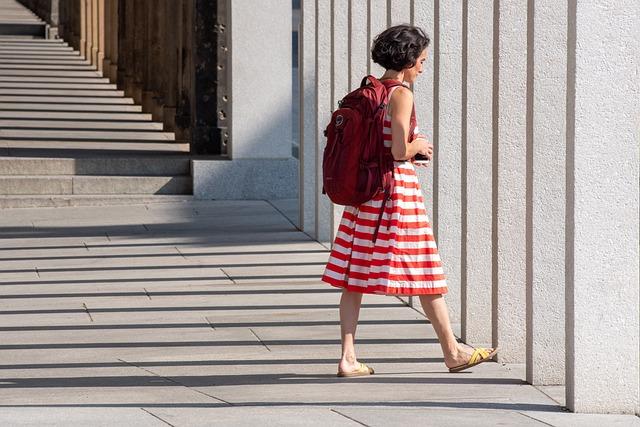Mixing patterns and colors in fashion can often feel like a daunting task, but with the right approach, it can elevate your style to a new level of sophistication. The key lies in mastering the art of balance and harmony, ensuring your ensemble stands out for all the right reasons. In this guide, we will explore the best techniques to combine different patterns and colors seamlessly, helping you avoid the common pitfalls of looking overdone. Whether you’re a seasoned fashionista or a curious beginner, these tips will empower you to express your unique personality through bold and stylish choices. Get ready to transform your wardrobe with confidence and flair.
Master the Art of Balance: Choosing Patterns that Complement Each Other
When it comes to mixing patterns, the key is to strike a harmonious balance that feels cohesive rather than chaotic. Start by selecting a dominant pattern that serves as the focal point of your ensemble or room. This could be a bold floral print or a striking geometric design. Once you have your main pattern, choose complementary patterns that echo the colors or shapes in the dominant pattern. Remember, it’s all about creating a visual dialogue between the elements. For example, if your dominant pattern features large, swirling shapes, opt for a secondary pattern with smaller, more subdued motifs in a similar color palette.
- Scale Matters: Mix large patterns with smaller ones to create contrast and depth. A big floral can pair beautifully with a small polka dot or stripe.
- Color Coordination: Ensure your patterns share a common color. This unifies the look and prevents it from feeling disjointed.
- Neutral Ground: Use neutral tones as a backdrop to allow bold patterns to shine without overwhelming the space.
- Texture Play: Combine different textures to add interest and dimension. A smooth silk with a rough tweed can create a striking contrast.
By thoughtfully curating your patterns and colors, you can create a sophisticated and stylish look that captures attention for all the right reasons. Balance and coordination are your best allies in this creative endeavor.
Color Harmony: Crafting a Cohesive Palette for Effortless Style
Creating a visually appealing ensemble requires an understanding of how different patterns and colors interact. Color harmony is key, as it allows you to blend various elements without overwhelming the eye. When mixing patterns, start with a neutral base. This could be a solid color piece that anchors your outfit, such as a classic white shirt or a pair of black trousers. From there, introduce one bold pattern to serve as the focal point, such as a floral blouse or a striped scarf. Ensure that the colors in your patterned pieces complement each other, avoiding clashing hues that could create visual chaos.
- Start with a neutral base: A plain canvas sets the stage for creative pattern play.
- Limit bold patterns: Choose one standout pattern to avoid visual clutter.
- Mix scale and type: Pair large patterns with smaller ones and mix different types, like geometric with organic shapes, for contrast.
- Maintain a consistent color palette: Use similar shades to create a cohesive look.
Another technique is to utilize the color wheel to guide your choices. Analogous colors, which are next to each other on the wheel, offer a subtle and sophisticated blend, while complementary colors provide a vibrant and dynamic contrast. Balance is crucial; if your top is heavily patterned, opt for solid-colored bottoms to maintain a sense of equilibrium. By understanding these principles, you can confidently create outfits that are both stylish and harmonious.

Scale and Proportion: How to Layer Patterns Like a Pro
Understanding the art of mixing patterns requires a keen eye for scale and proportion. When layering patterns, consider starting with a dominant pattern that is bold and eye-catching. This will act as the anchor for your design. Then, introduce secondary patterns that are smaller in scale to complement the dominant one without competing for attention. This creates a harmonious balance and avoids overwhelming the senses.
To achieve a professional look, follow these guidelines:
- Contrast Wisely: Use patterns with varying scales to add interest. For instance, pair a large floral print with a small polka dot or stripe.
- Color Coordination: Ensure that the patterns share at least one common color to create a seamless visual flow.
- Neutral Balance: Incorporate neutral elements to provide a resting space for the eyes, allowing the patterns to shine without clashing.
By mastering the balance of scale and proportion, you can layer patterns like a pro, achieving a look that is both stylish and sophisticated.

Accessorize with Intent: Subtle Touches to Tie Your Look Together
In the art of pattern and color mixing, accessories are your secret weapon. The right pieces can harmonize disparate elements, creating a cohesive look without overwhelming the eye. Choose accessories that echo a color or pattern found in your main pieces. This could be a scarf with a hint of your blouse’s hue or a handbag that picks up the subtle lines of your skirt’s print.
To keep your ensemble from feeling cluttered, consider these tips:
- Minimal Jewelry: Opt for sleek and simple jewelry to balance bold patterns. A delicate necklace or a pair of understated earrings can add just the right amount of shine.
- Neutral Belts: A neutral-toned belt can cinch your look together, providing a subtle break between contrasting patterns or colors.
- Monochromatic Shoes: A pair of shoes in a single color can ground your outfit, allowing your mixed patterns to shine without competition.
By thoughtfully selecting accessories, you can elevate your look with intentionality and style, ensuring each element complements rather than competes.
In Conclusion
mastering the art of mixing patterns and colors is not as daunting as it may initially seem. By adhering to the principles of balance, scale, and color harmony, you can create visually stunning ensembles that express your unique style without appearing overdone. Remember to start with a neutral base, incorporate varying scales of patterns, and use the color wheel to guide your choices. With practice and confidence, you’ll soon develop an intuitive sense for what works, allowing you to experiment fearlessly. Embrace your creativity and transform your wardrobe into a vibrant canvas of self-expression. Keep these guidelines in mind, and you’ll find that the world of patterns and colors is yours to explore, ensuring your outfits are always chic and compelling.




